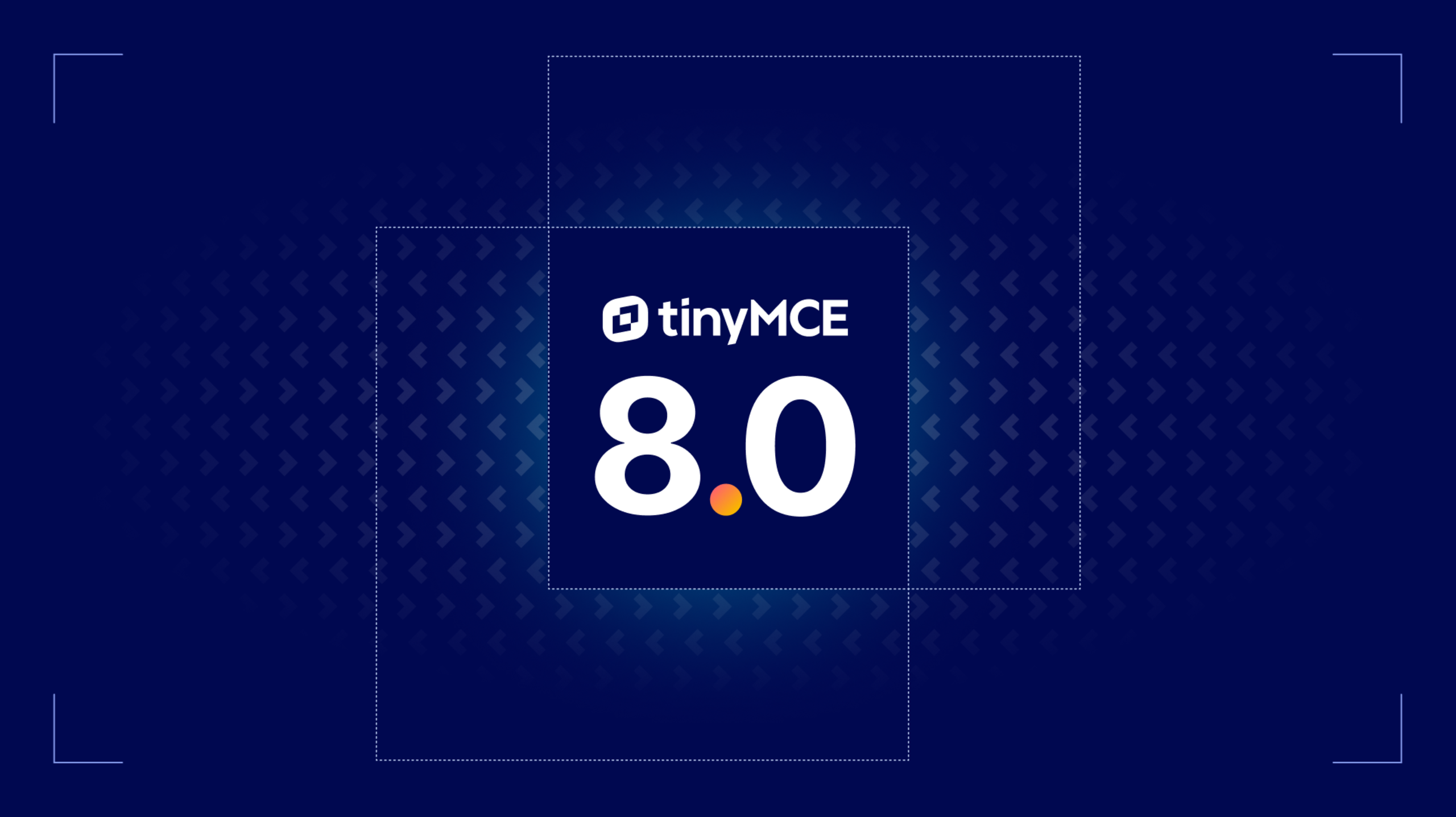TinyMCE 8.0 is here, and it’s packed with new features and updates that make adding a collaborative rich text editor to any web application easier, smarter, and more scalable. Whether your team is building a content management system, an internal SaaS app, or a document management system, the latest TinyMCE updates are all about helping teams work better together.
From the long-requested feature Suggested Edits to the all-new User Lookup API, the TinyMCE 8 release focuses on what teams need the most: cleaner integrations, faster features, and collaboration built right into the editor. If your users rely heavily on team workflows, content review, or pasting rich content into your app, this is the release for you. Let’s walk through the biggest highlights, starting with one of the most anticipated features to date.
New feature: Suggested Edits
You’ve been asking for it, and we delivered. The brand new Suggested Edits feature in TinyMCE 8 is the ultimate addition to the TinyMCE collaboration suite, which already contains Revision History, Comments, Mentions, and AI Assistant. This new feature adds change tracking to your rich text editor. Now users can propose content edits that are clearly marked in the editor, accept or reject them, and see work done by multiple teammates all in one place.
It’s easier than ever before with Suggested Edits to allow for tracking changes in your web app and create a Google Docs or Office365 like experience for your users. Adding Suggested Edits to your collaboration suite reduces reliance on third-party review systems and keeps the editing experience contained in one interface. Developers can try it out today with a free 14-day trial of TinyMCE that includes all the premium features. If your users need content review or approvals, Suggested Edits is the ideal solution.
New API: The TinyMCE User Lookup API
One of the biggest additions in TinyMCE 8 is the new User Lookup API. Until now, developers had to configure user info separately for each plugin, which meant duplicating logic, managing multiple data formats, and possibly introducing data inconsistencies. The User Lookup API centralizes all of that.
The API is designed to streamline how user identity is handled across the collaborative plugins Revision History, Comments, and Suggested Edits. In the future, Mentions will also be a part of the User Lookup API.
With the new configuration, developers can define a single function that returns user metadata (like name, avatar, or title) based on a user ID, improving code maintainability, app performance, and overall development. Whether your app is fetching user details from a local store or a remote API, everything now plugs into the same mechanism. Instead of re-implementing identity logic three different ways,
Updates: Comments and Mentions
TinyMCE 8 added more updates to its collaboration features. Both the Comments and Mentions features received attention in this latest update with some major improvements.
For starters, the Comments UI has been cleaned up, and the sidebar is more intuitive. It’s easier for users to leave and resolve comments inline, and threads now support multiple replies, making conversations around content more natural. Developers can hook their app into the creating, resolving, and deleting comments lifecycle with updated APIs. TinyMCE 8 gives developers better control over commenting workflows.
Mentions should also get… Well, a mention. Mentions has been upgraded with improved performance and customization. Now your app can prefetch user lists asynchronously and render mention suggestions using custom templates. It’s easier to integrate mentions with your existing user systems now, whether it’s for tagging teammates, customers, or contributors.
Updates: PowerPaste
In TinyMCE 8, PowerPaste has been upgraded to handle copy-paste with even better accuracy and cleaner HTML. It now removes more junk HTML and inline styles by default, delivering cleaner, more consistent content that won’t bloat your front end. PowerPaste does a better job of preserving tables, lists, and formatting, so users get their original content without needing to clean up after pasting. It’s a necessity if your users are pasting content from multiple tools into your rich text editor.
What’s next?
TinyMCE 8 is a big step ahead for building collaborative, scalable web applications. Whether you're upgrading from a previous version or adding TinyMCE for the first time, all of these new features are designed to make both the developer and end-user experience smoother and more powerful. Check out the official technical documentation to learn more about TinyMCE 8.
👉 Note: If you're migrating from TinyMCE 7, we’ve got you covered. A full migration guide is coming soon, but you can get a head start by checking out our TinyMCE 8 migration documentation.
